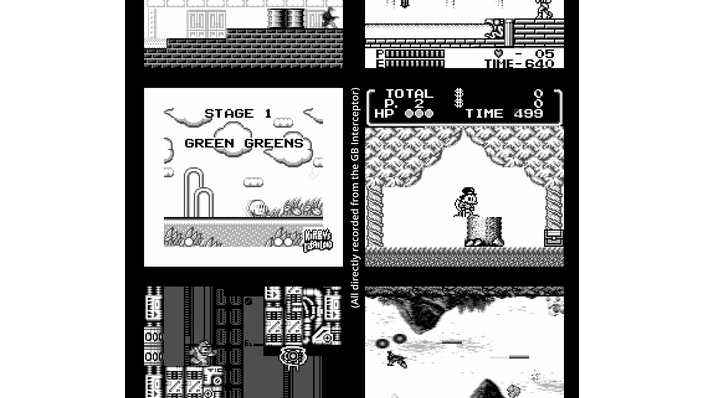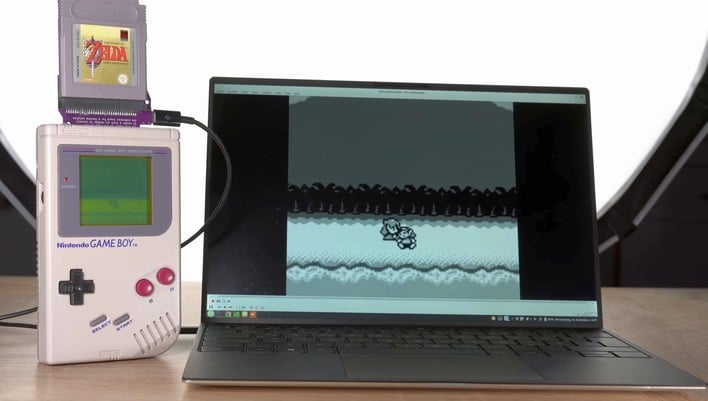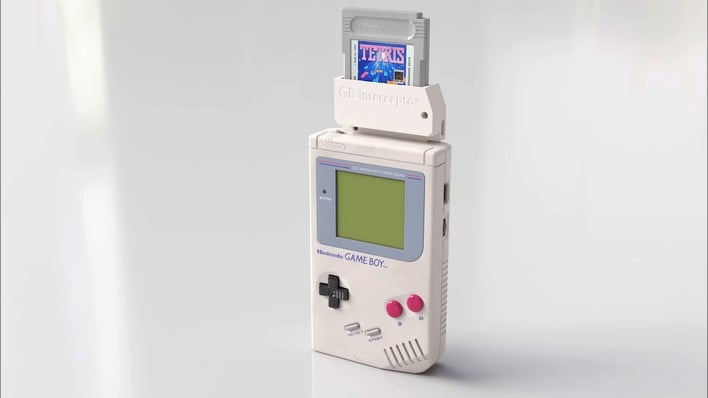Retro Gaming Modder Creates A Fantastic Capture Cartridge For Nintendo's Game Boy
The original Game Boy is one of the longest-lived and most-beloved video game systems in history, but it has the same limitation as most handheld game systems: no video out. That means that speedrunners and streamers have to find hacky workarounds if they want to broadcast their gameplay to others. YouTuber Sebastian Staacks (known on YouTube as "there oughta be") has devised the most elegant solution yet: a capture cartridge for the Game Boy.
The device is known as the GB Interceptor and, before you ask, yes, you can get one yourself. It snaps into the cartridge slot of the handheld and then provides its own cartridge slot where you can install a game. From there, you simply connect a USB Type-C cable to the port on the side and then wire that up to almost any reasonably-modern PC.

So, how does it work? After all, it's not like the Game Boy sends a video feed to the cartridge port. This device instead contains an RP2040 microcontroller like the one found in the Raspberry Pi Pico. This little chip features a pair of ARM Cortex-M0+ cores that nominally run at 133 MHz. A modest overclock was required to properly run the software for the GB Interceptor.

That software is in fact a partial emulator for the Game Boy. The way it works is that the GB Interceptor creates its own virtual copy of the real Game Boy's RAM and simply executes all the same code on all the same data that the real system does. This ingenious approach does a neat work-around of a lot of what would otherwise be limitations of a cartridge-slot-based approach, like the inability to sample controller inputs. Because it's executing all the same code, it doesn't need to know what the inputs were, only what the results of the inputs were.
If you'd like to get your own GB Interceptor, know that it's going to take a little doing. While the project is open-source, you can't just buy a completed unit off the shelf. Sebastian has a guide on his YouTube channel that will walk you through the process of ordering and assembling one, but you may want to wait until some intrepid reseller starts shipping pre-built units. Sebastian expects the unit price to be around $50.




